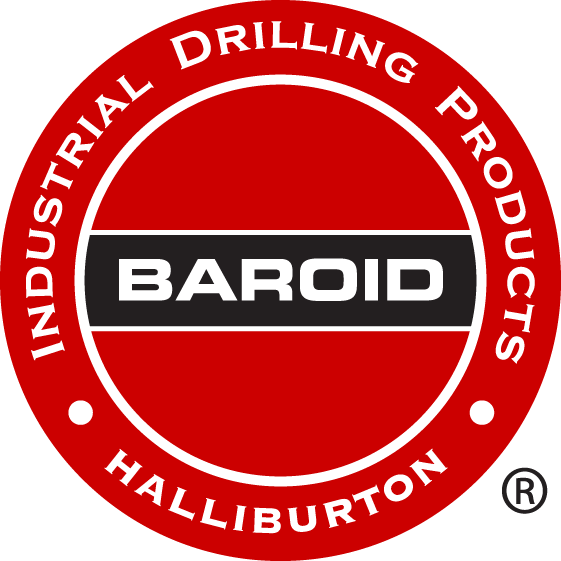 Search
Search
 Search
Search

Industrial Products Laboratory has received calls from both IDP field sales engineers and customers concerning the effect of inorganic contaminants on hydraulic conductivity of IDP sodium bentonite-based products.
The inorganic substances or contaminants in effluents can be grouped as acids, bases and neutral salts, such as sodium chloride, sodium sulfate, calcium carbonates, etc… All are classified as aqueous permeants.
The pertinent types of reactions between a bentonite clay and the inorganic permeant are ion exchange interactions, change in ionic strength in solution, dissolution of clay minerals (change clay structure), flocculation and precipitation. The reactions depend upon the type of ionic species present in the aqueous solution and their existing state, which includes size, charge (type and density), and the associated environment (pH and dipole moment).
The permeability of bentonite clay generally increases in response to permeation with the aqueous salts, however, there are apparent differences in the permeability increases that are unique to each chemical. With the same anionic counterpart of chloride (Cl-) ions, potassium cations show more adverse effect on bentonite clay permeability than sodium ions. An effluent containing a low concentration of potassium chloride (KCl) will cause a more drastic increase in the hydraulic conductivity of a bentonite seal than an effluent containing a moderate amount of sodium chloride (salt).
It was found that with the same cationic counterpart of sodium ions (Na+), chloride anions (Cl-) will induce a greater permeability increase than sulfate (SO4-2) or carbonate (CO3-2) anions.
A wastewater containing sodium sulfate contaminant may have a minimal effect on IDP bentonite grouts as a barrier.
Solutions containing divalent cations such as calcium (Ca++) and magnesium (Mg++) display a two-stage permeability change that is characterized by a rapid initial degradation followed by essentially a steady-state response. This indicates a "saturation limit" where the continued addition of calcium or magnesium salts does not result in further deterioration of permeability. The following table lists the permeability of a bentonite slurry permeated with different inorganic (salt) contaminants at various concentrations.
(Note: The data can only serve as a guideline to illustrate the trend of change of permeability).
Bentonite Slurry Permeability (cm/sec) Change by Contaminants
| Contaminants | Amount of Contaminant Added, % by Wt. | |||
|---|---|---|---|---|
| 0% | 0.5% | 2% | 3% | |
| Sodium Chloride | 0.4 x 10-7 | 0.5 x 10-7 | 0.9 x 10-7 | |
| Calcium Chloride | 0.4 x 10-7 | 1.6 x 10-7 | 2.0 x 10-7 | 2.0 x 10-7 |
| Magnesium Chloride | 0.4 x 10-7 | 1.4 x 10-7 | 1.7 x 10-7 | 1.7 x 10-7 |
| Potassium Chloride | 0.4 x 10-7 | 0.5 x 10-7 | 0.7 x 10-7 | 1.6 x 10-7 |
| Ammonium Chloride | 0.4 x 10-7 | 0.6 x 10-7 | 1.1 x 10-7 | 3.0 x 10-7 |
| Calcium Carbonate | 0.4 x 10-7 | 0.4 x 10-7 | ||
| Magnesium Carbonate | 0.4 x 10-7 | 0.5 x 10-7 | 0.5 x 10-7 | |
| Calcium Sulfate | 0.4 x 10-7 | 1.1 x 10-7 | 1.1 x 10-7 | 0.9 x 10-7 |
| Sodium Sulfate | 0.4 x 10-7 | 0.4 x 10-7 | 0.4 x 10-7 | |
| Sodium Nitrate | 0.4 x 10-7 | 0.5 x 10-7 | 0.6 x 10-7 | |
| Ferrous Sulfate | 0.4 x 10-7 | 0.6 x 10-7 | 1.0 x 10-7 | 1.4 x 10-7 |
The observed trends can be best explained with a physiochemical model from Gouy-Chapman's double-layer theory. This model predicts that as the electrolyte concentration in the pore fluid increases, the thickness of the double layer tends to decrease. The clay tends to approach a more flocculated structure due to the decrease in the double layer thickness. Hence, an increasingly more flocculated and more permeable structure would be expected with increasing aqueous salt concentration.
The permeability generally increases with increasing salt concentration as predicted by the model. That explains why the fluid loss of QUIK-GEL® and BORE-GEL® slurries increases dramatically when the slurries are contaminated with brackish or salty water. A contaminated gel slurry often exhibits a physiochemical model of aggregation and flocculation, which is the worst among the four models of a drilling mud. The four physiochemical models of a clay-based drilling fluid are:
When all else is held constant, increasing the ion valence (number of charges) will also cause a decrease in the thickness of the double layer. Thus, the salts with divalent cations would be ore flocculated than those with monovalent cations at the same concentration. Calcium ions with a double charge are more detrimental than sodium ions with a single charge.
Also the model predicts that the smaller the hydrated ion, the closer it can approach the colloidal surface of the clay particle. Thus, all else being equal, the smaller the hydrated ion, the smaller the double layer and the greater the tendency for a more flocculated clay structure. The potassium ion is more damaging to the sealing capability of a bentonite clay liner than the sodium ion at the same concentration due to the fact that the potassium ion is smaller.
That again explains why potassium ions and ammonium ions are often incorporated into drilling mud as shale inhibitors to reduce the tendency of clay and shale to swell.
In conclusion, the permeability of the bentonite filter cake increases, over that measured with water, in response to permeation with the salt solutions mentioned. Furthermore, the greater the concentration of the electrolytes (contaminants) in solution, the greater the permeability increase over the water permeability. In general, it appears that there is a saturation limit for solutions containing divalent cations in which only limited further degradation of permeability occurs beyond some electrolyte concentration. It is further stated that the double layer theory of the Gouy-Chapman model can be utilized to explain permeability changes in response to permeation with electrolytic solutions.
